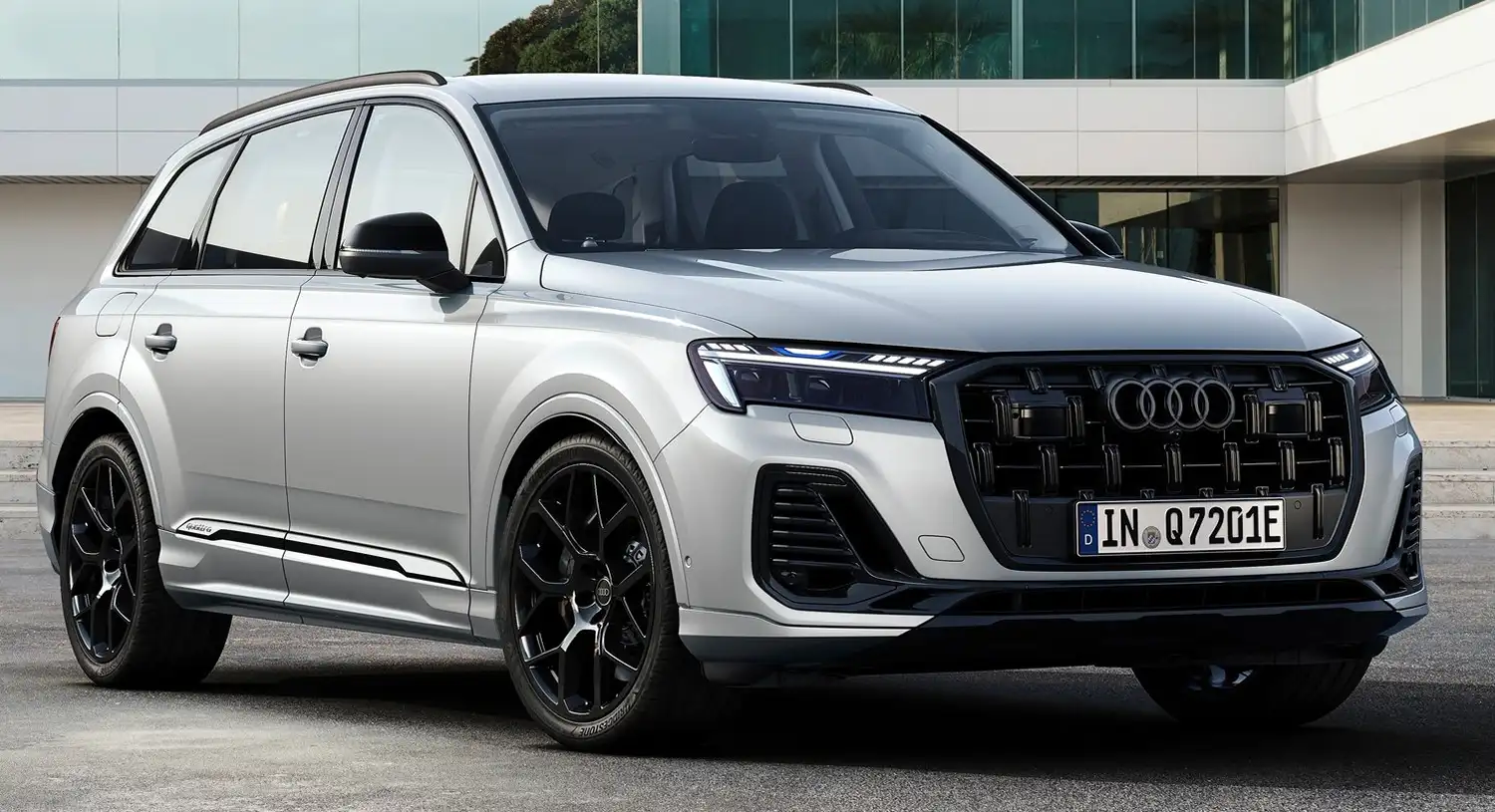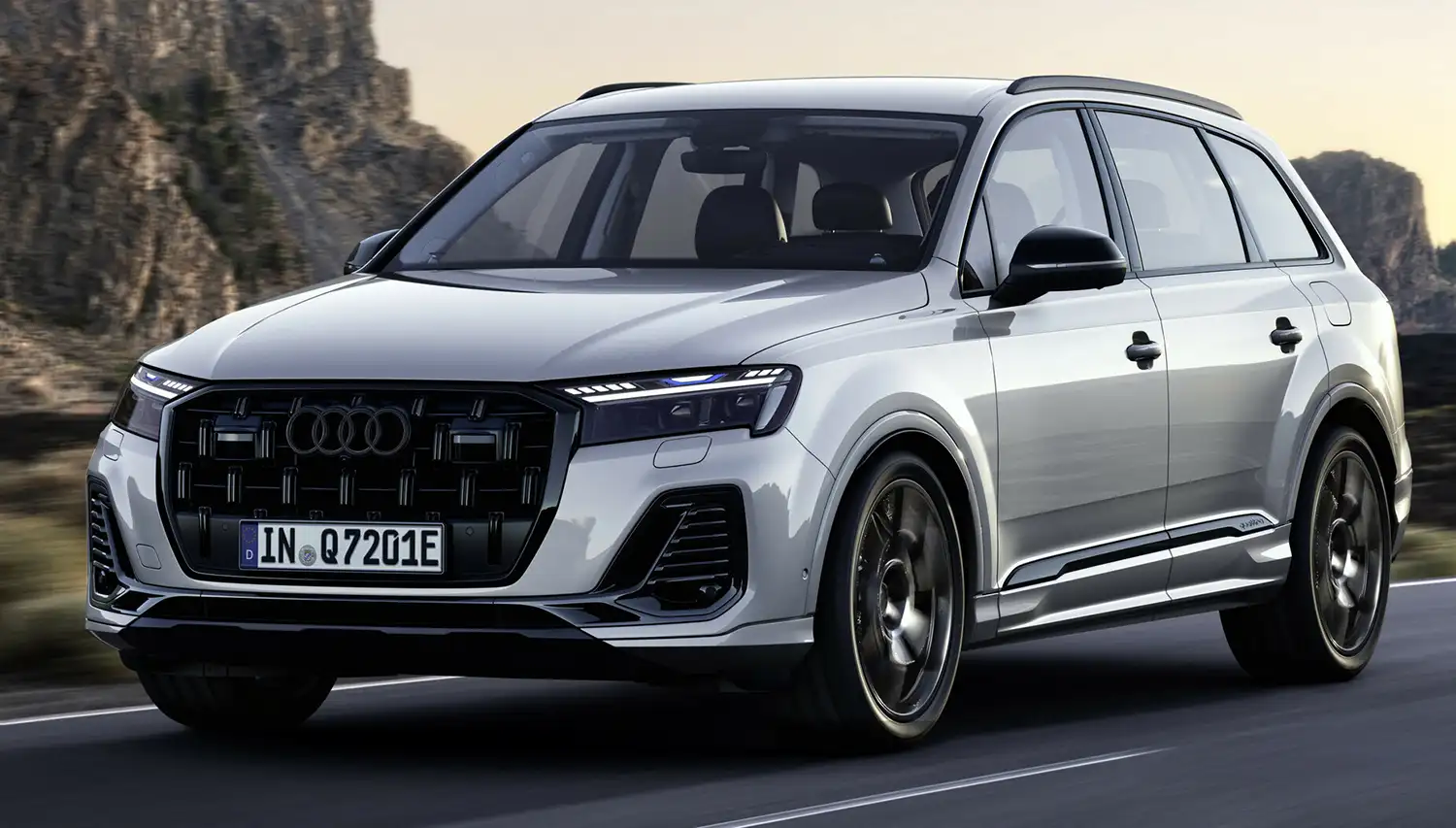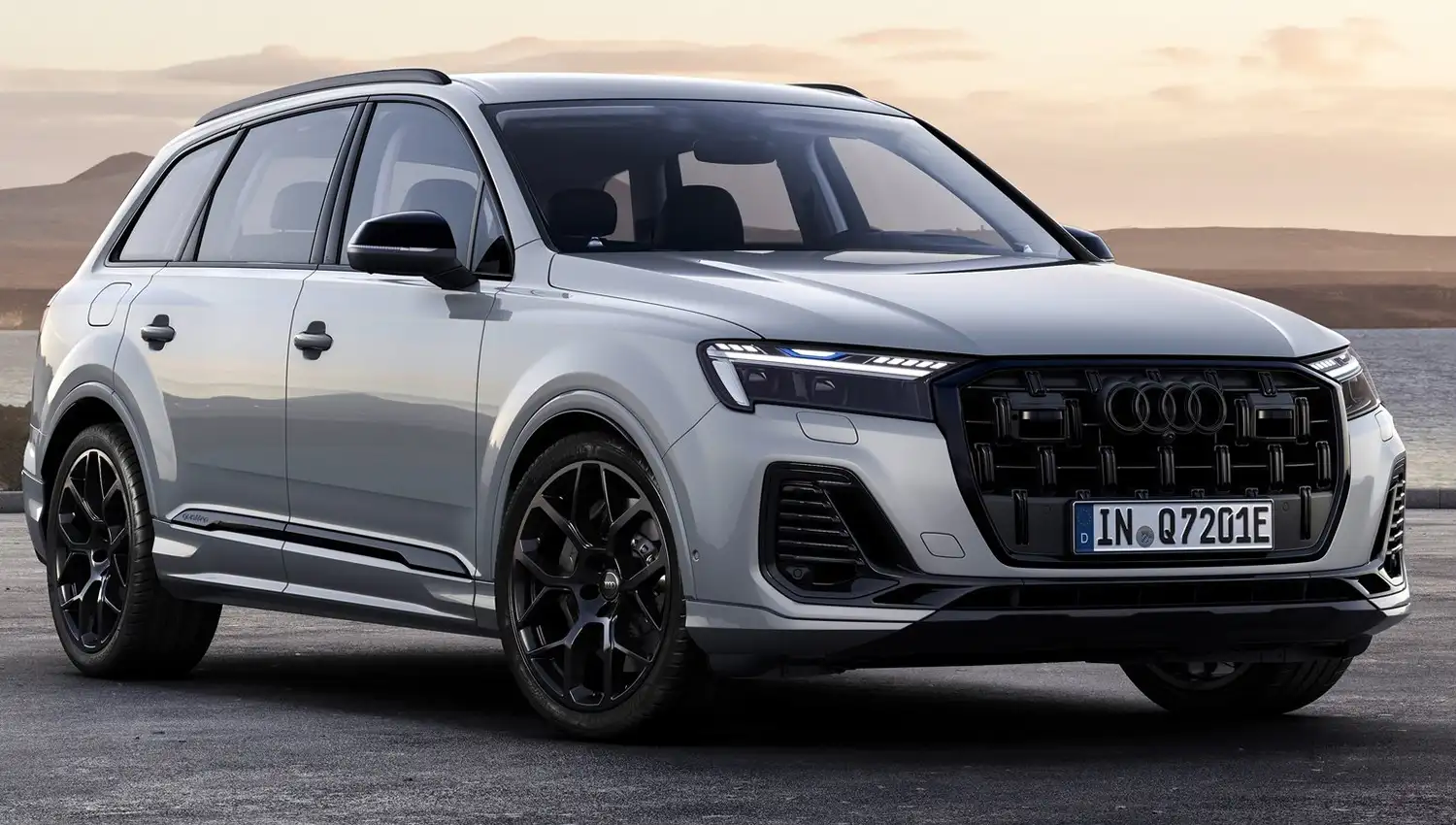
Audi gives the electrified Q7 and Q8 a facelift with updated battery technology and more efficient driving modes. The exterior design was also reworked as part of the model upgrade and features new front and rear aprons to highlight the strong character of the two models. For the first time, both plug-in hybrids are available with all-wheel steering for an increased degree of safety and comfort. Electromechanical active roll stabilization (eAWS) guarantees even more dynamic handling. Prices start at 85,500 euros (Q7 55 TFSI e) and 92,900 euros (Q8 55 TFSI e).
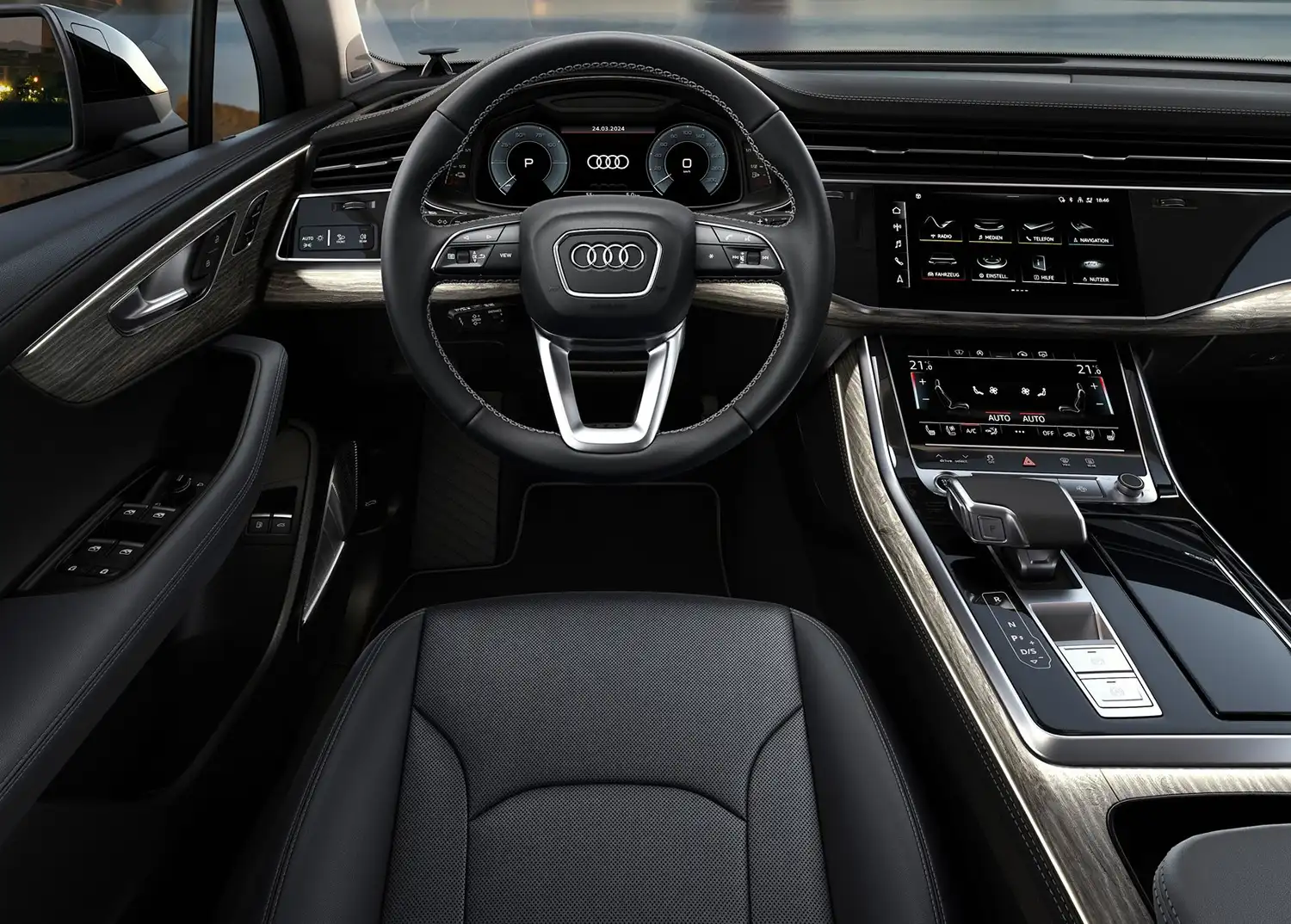
Larger battery, more power, longer range
At the heart of both plug-in hybrids is a three-liter six-cylinder Otto engine with 250 kW (340 PS) of output, a compact electric motor (PSM) with a maximum output of 130 kW and 460 Nm of torque, and a new, more powerful, liquid-cooled lithium battery located under the floor of the trunk. The battery’s energy is concentrated in 17 cells with 70 Ah each, called “stacks”. Six stacks form one unit, which are connected in series. This compact design inside the battery housing eliminates the need for an additional module housing, resulting in higher power density. The design achieves a maximum capacity of 25.9 kWh (gross; 22 kWh net) at 370 volts. The increased capacity results in an all-electric range of up to 90 kilometers in urban areas under the WLTP EAER City standard: this is equivalent to a combined electric range of up to 85 km under the WLTP EAER standard.
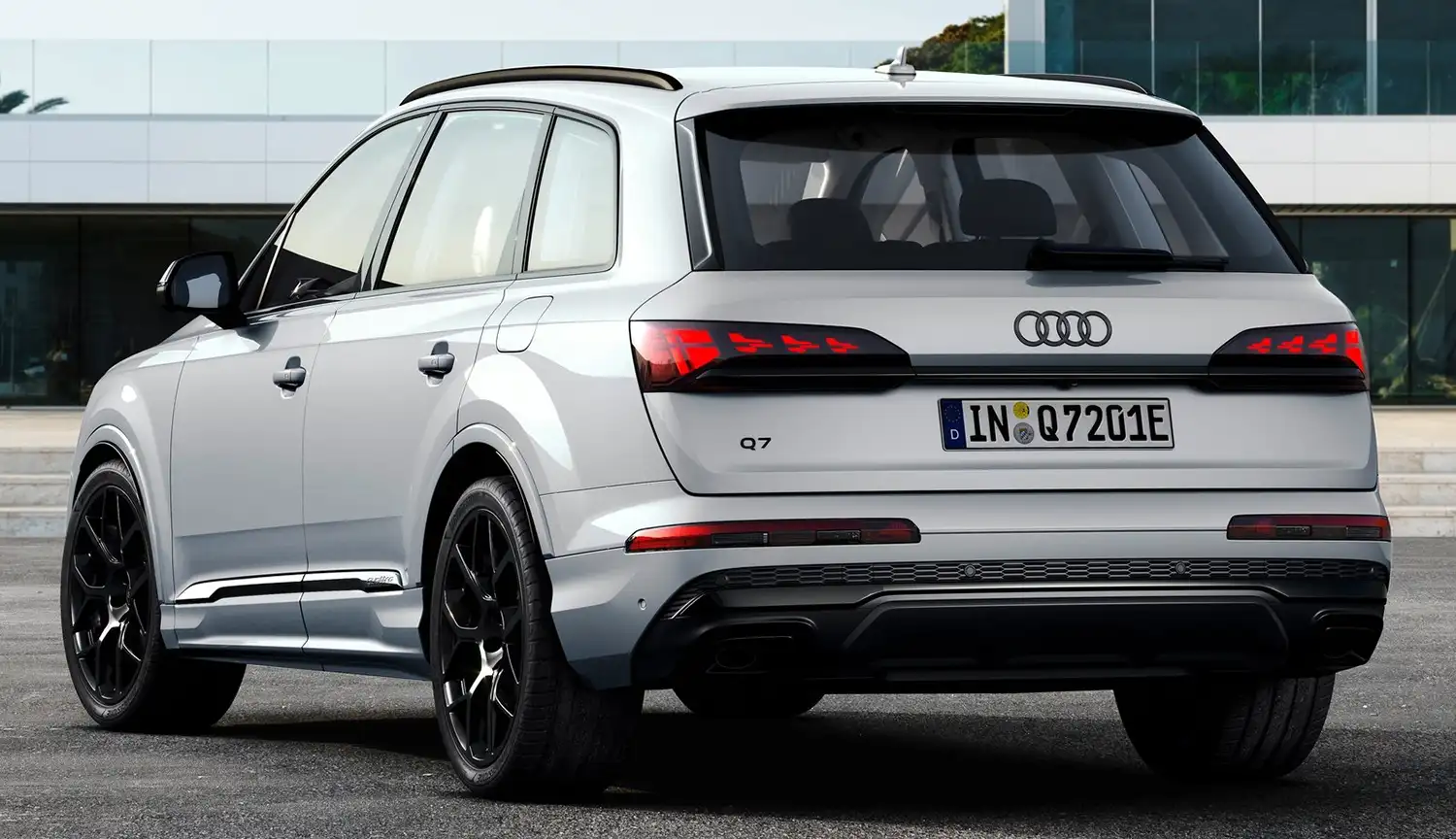
The maximum system output of both models with the 55 TFSI e quattro starts at 290 kW (394 PS) and a maximum system torque of 600 Nm (fuel consumption for the Q7 (weighted, combined): 1.4–1.2 l/100 km; power consumption (weighted, combined): 29.1–27.8 kWh/100 km; CO emissions (weighted, combined): 33–28 g/km; CO class (weighted, combined): B; fuel consumption on discharged battery (combined): 10.5–9.8 l/100 km; CO class on discharged battery: G; fuel consumption for the Q8 (weighted, combined): 1.6–1.2 l/100 km; power consumption (weighted, combined): 30.4–27.7 kWh/100 km; CO emissions (weighted, combined): 37–27 g/km; CO class (weighted, combined): B; fuel consumption on discharged battery (combined): 10.9–8.9 l/100 km; CO class on discharged battery: G) thanks to the electric motor’s modified design.
With both engines working in tandem, the electrified Q7 and Q8 accelerate to 100 km/h in 5.7 seconds. Higher in the range is the 60 TFSI e quattro, which also benefits from a newly designed electric motor with up to 360 kW (490 PS) of system output and up to 700 Nm of torque (fuel consumption for the Q7 (weighted, combined): 1.4–1.3 l/100 km; power consumption (weighted, combined): 29.1–28 kWh/100 km; CO emissions (weighted, combined): 33–29 g/km; CO class (weighted, combined): B; fuel consumption on discharged battery (combined): 10.5–10 l/100 km; CO class on discharged battery: G; fuel consumption for the Q8 (weighted combined): 1.6–1.2 l/100 km; power consumption (weighted, combined): 30.2–27.9 kWh/100 km; CO emissions (weighted, combined): 36–28 g/km; CO class (weighted, combined): B; fuel consumption on discharged battery (combined): 10.9–9.9 l/100 km; C class on discharged battery: G).
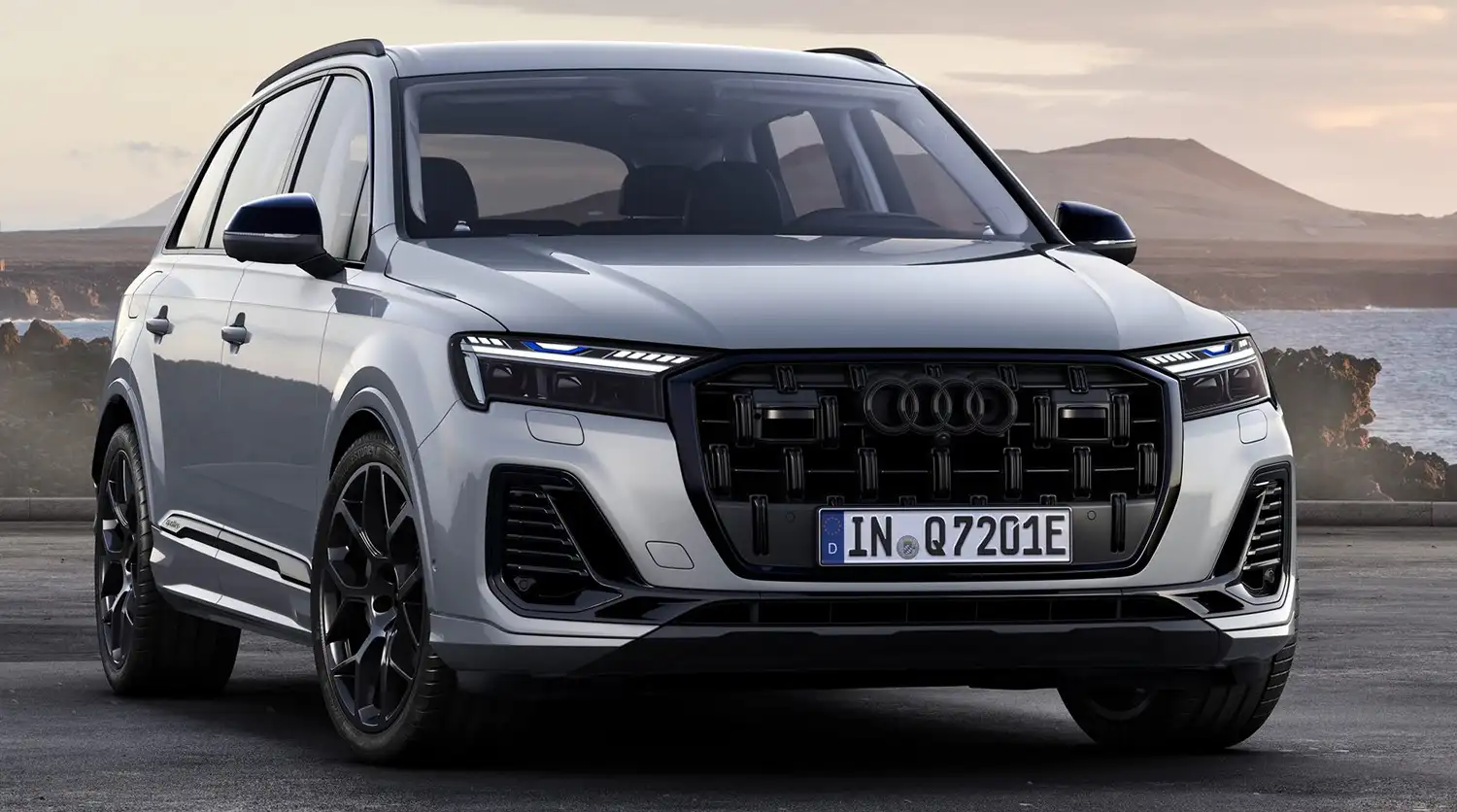
In this configuration, the Q7 and the Q8 go from 0 to 100 km/h in 5.0 seconds. All variants have an electronically limited top speed of 240 km/h, with an all-electric top speed of 135 km/h. The battery charges up to 7.4 kW and reaches 100 percent in approximately three hours and 45 minutes when charged at top power. Customers who book the Audi charging service have access to approximately 630,000 charging points in 29 European countries, including the Audi charging hubs in Nuremberg, Zurich, Berlin, Salzburg, Munich, and Frankfurt (additional sites will follow). Customers can conveniently charge with Audi and many other providers with a single card.
In many countries and cities, plug-in hybrid owners enjoy tax incentives or local transportation benefits, such as free parking or the right to use bus lanes. In Germany, both plug-in hybrid models benefit from the company car regulation for electric cars, according to which they are only taxed at a flat rate of 0.5 percent of their gross list price.
Maximum efficiency: operating strategy
Thanks to the product upgrade, customers can start their partially electric Q7 or Q8 in fully electric EV mode or hybrid mode. Once selected via the MMI, the desired mode remains active until manually changed. The fully electric EV mode has been fine-tuned so that only battery-powered propulsion is used even when the accelerator pedal is fully depressed.
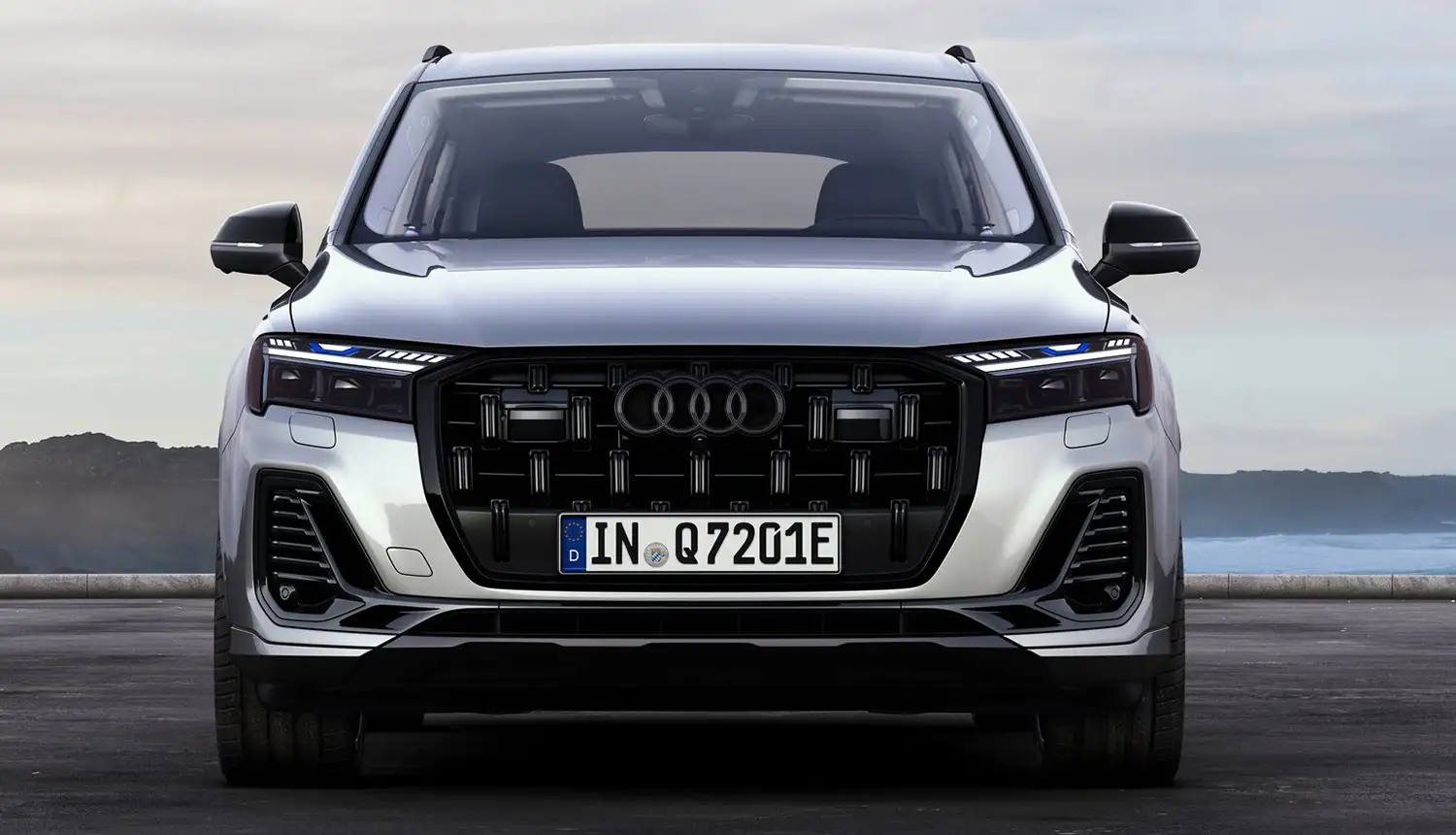
Hybrid mode uses two operating modes: auto and hold. In auto mode, the predictive operating strategy automatically activates when navigation is started in the standard MMI navigation plus. Acceleration is primarily provided by the TFSI engine, supported as required by the electric motor. At low engine speeds, the electric drive now bridges the fraction of a second that the turbocharger needs to build up the pressure even more powerfully, thanks to the increased torque from the product upgrade so that the drive system responds spontaneously. Put simply, the predictive operating strategy works by driving as far as possible on electric power and using up the existing battery charge by the time the driver reaches the destination.
In hold mode, the existing battery charge is kept at its current level with only minimum fluctuations. This is achieved by recovering braking energy through a process known as recuperation and by shifting the load point through targeted interventions in the 3.0 TFSI management system. As a result, after a conventionally driven long-haul route, customers can now drive to their urban destination on all-electric power, with zero emissions and virtually no noise.
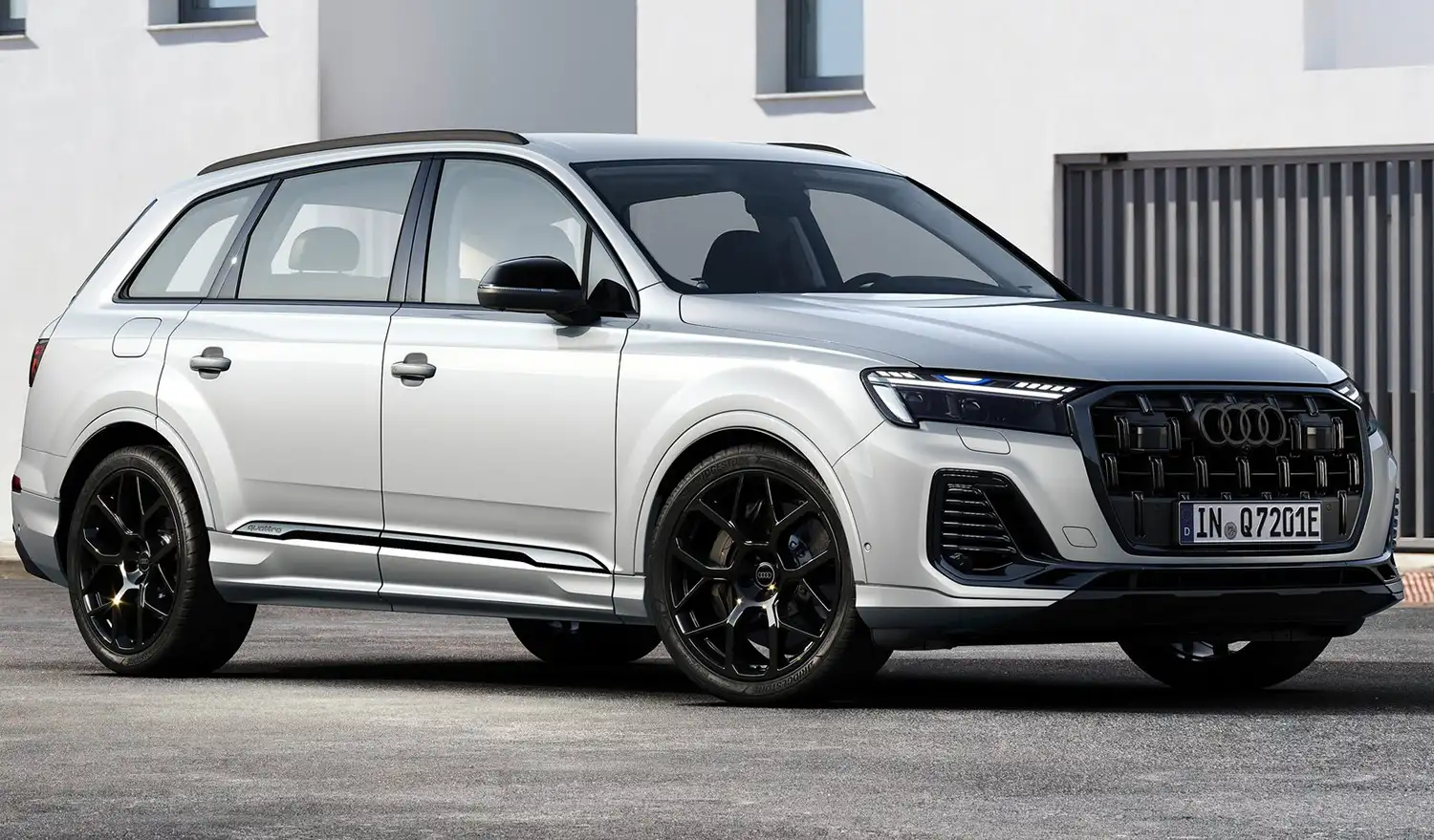
As a new feature included with the product upgrade for the Q7 TFSI e and Q8 TFSI e, the battery recharges intelligently and only above speeds of approximately 65 km/h when in charge mode. This maximizes efficiency and ensures high levels of electric driving in the city and in stop-and-go traffic. What’s more, in charge mode, the 3.0 TFSI is no longer constantly used to charge the battery; instead, recuperation alone is used. Charge mode ends when the battery has recharged to its maximum capacity at 75 percent to conserve the battery and increase efficiency.
The moments when the driver takes their foot off the accelerator pedal are crucial for the efficiency of the plug-in hybrid Q7 and Q8. The operating strategy switches to predictive efficiency assist (PEA) in these situations. In addition to navigation data, this driver assistance system uses the distance to the vehicle in front to decide between coasting with the TFSI switched off and recuperation, i.e., recovering kinetic energy and converting it into electrical energy. In thrust phases, the Q7 and Q8 TFSI e can recover up to 25 kW of power and feed it back into the lithium-ion battery.
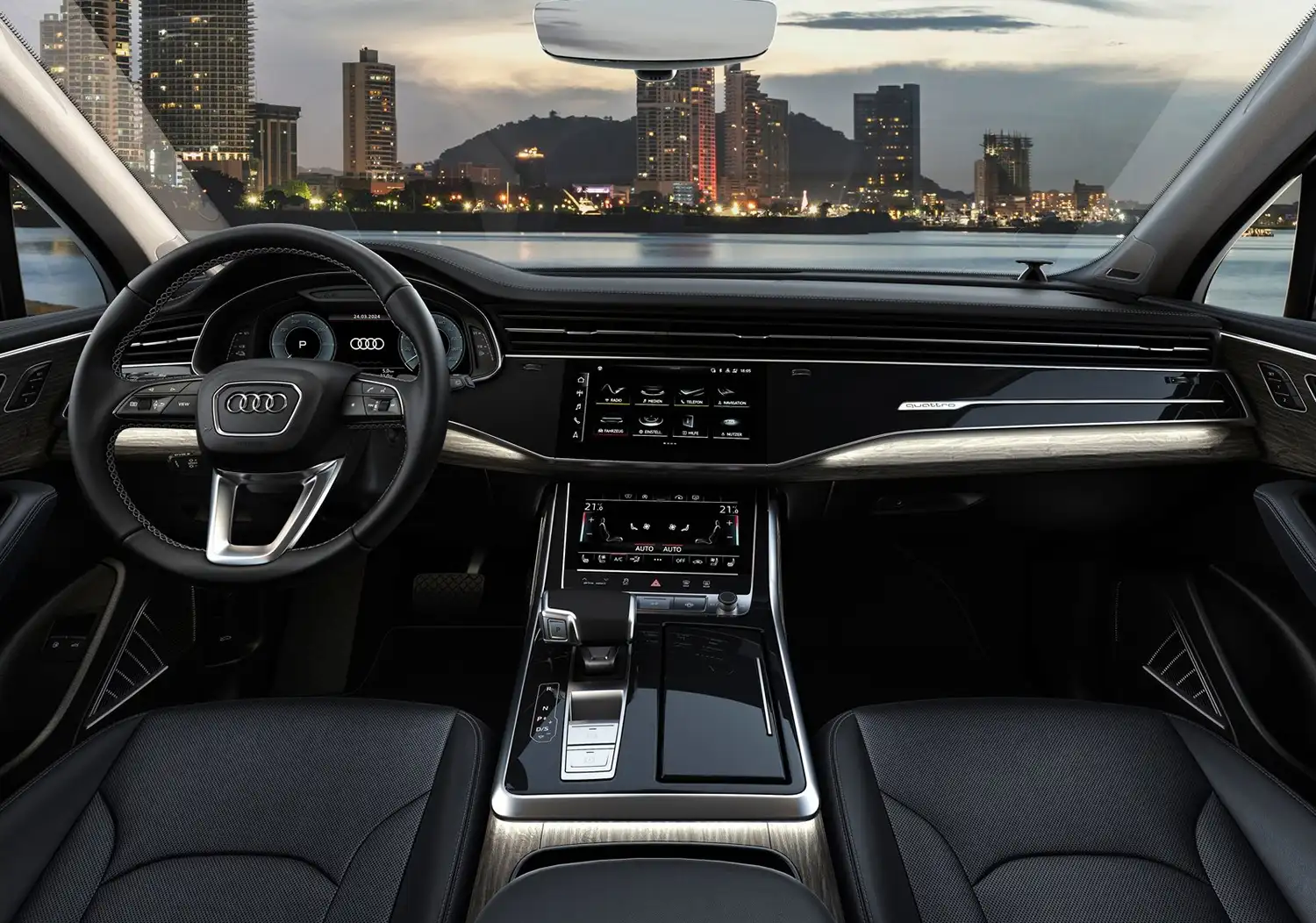
Operating as a generator, the electric motor performs all light to moderate braking up to 0.3 g, corresponding to more than 90 percent of all deceleration events in everyday driving. The hydraulic wheel brakes only need to be used for heavy braking. The hybrid SUVs achieve up to 80 kW of recuperation power during braking.
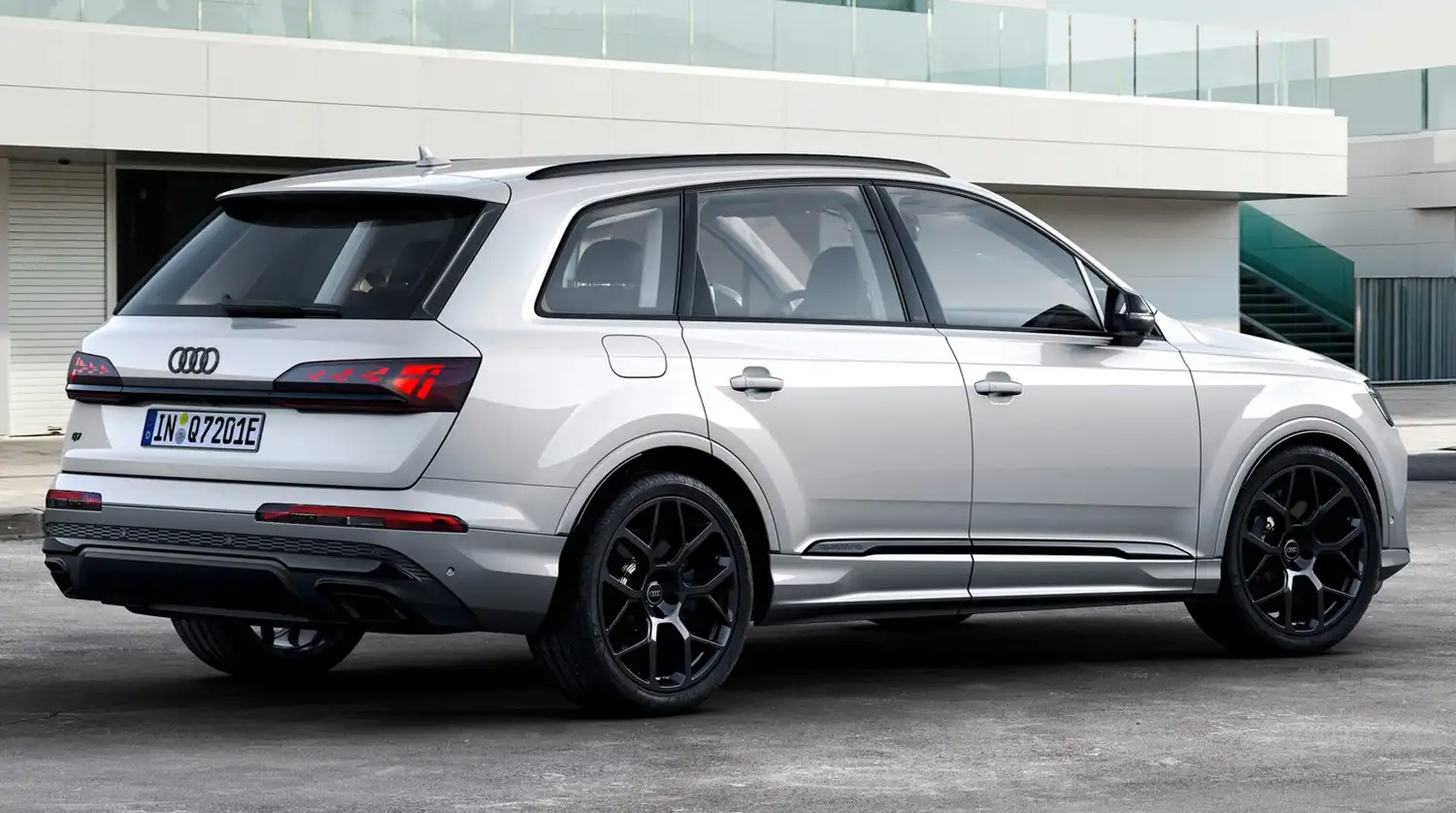
When the optional adaptive cruise assist with radar cruise control is active, the PEA helps with deceleration and fuel-saving acceleration. If turned off, the Audi virtual cockpit or optional head-up display indicates to the driver when they should take their foot off the right pedal. Detail icons such as intersections, city signs, or vehicles ahead illustrate the reason for the reduction in speed.
Optimized equipment range to meet every need
High-intensity LED headlights light up the road as standard; Matrix LED headlights are available as an option. Innovative HD Matrix LED headlights with Audi laser light as an additional high beam for a significantly increased beam range are available as a further option. New for the top-of-the-range headlights are digital daytime running light signatures. They give the partially electric Q7 and Q8 a characteristic and unmistakable appearance, allowing the user to select one of four individual light signatures via the MMI. For the first time, the vehicles also come optionally with largely digitalized OLED rear lights, which also have digital light signatures. Moreover, the digital OLED rear lights feature proximity indication in conjunction with the assistance systems.
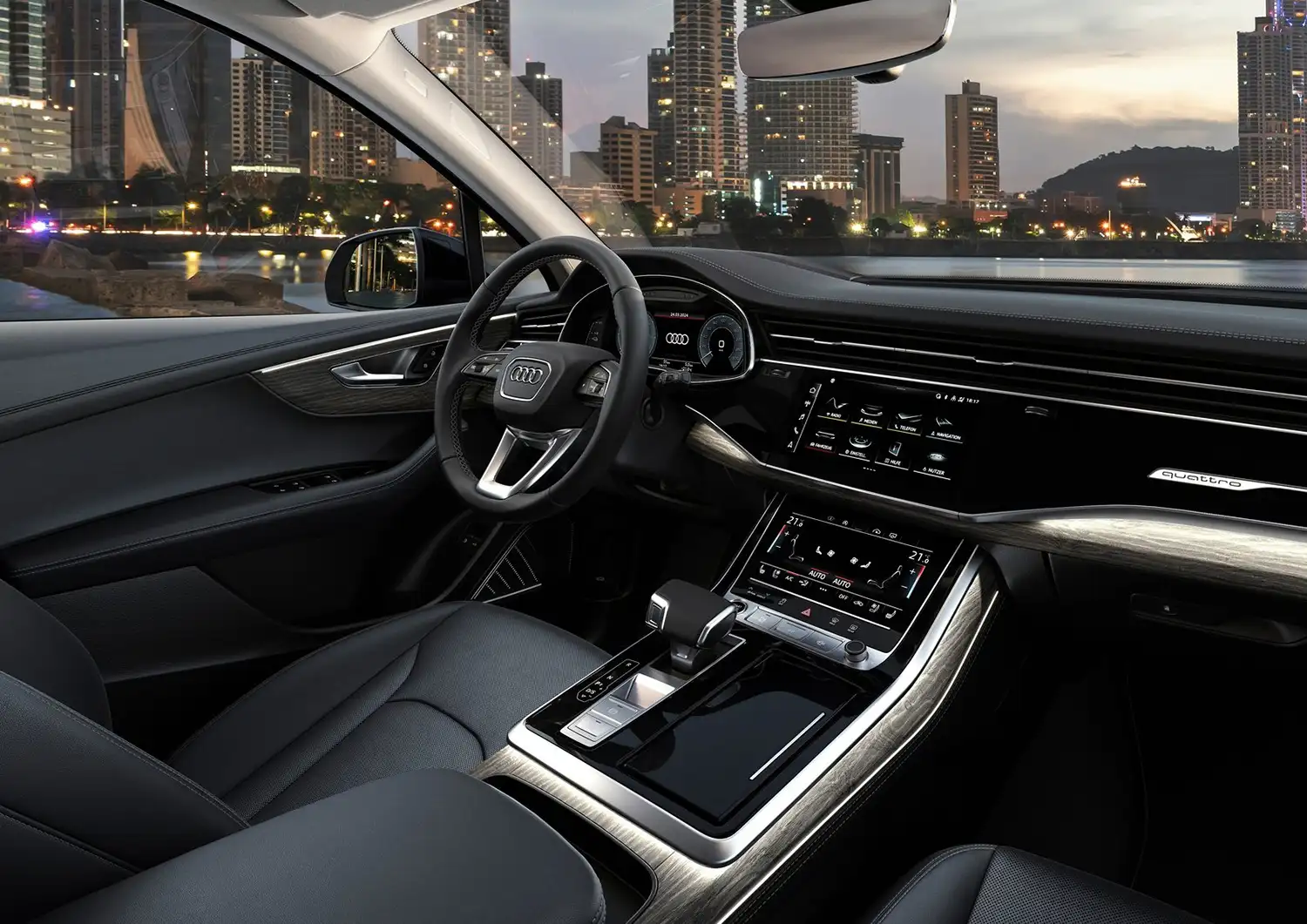
Like the product upgrade for the base versions, the electrified Q7 and Q8 have a significantly upgraded equipment range. In addition to contrasting colors for the seat stitching, customers can choose from nine decorative inlays and three new finishes. The wheel range includes five new designs for sizes ranging from 21” to 23” (depending on the model). Audi has also expanded the range of apps and driver assistance systems as part of the model upgrade.
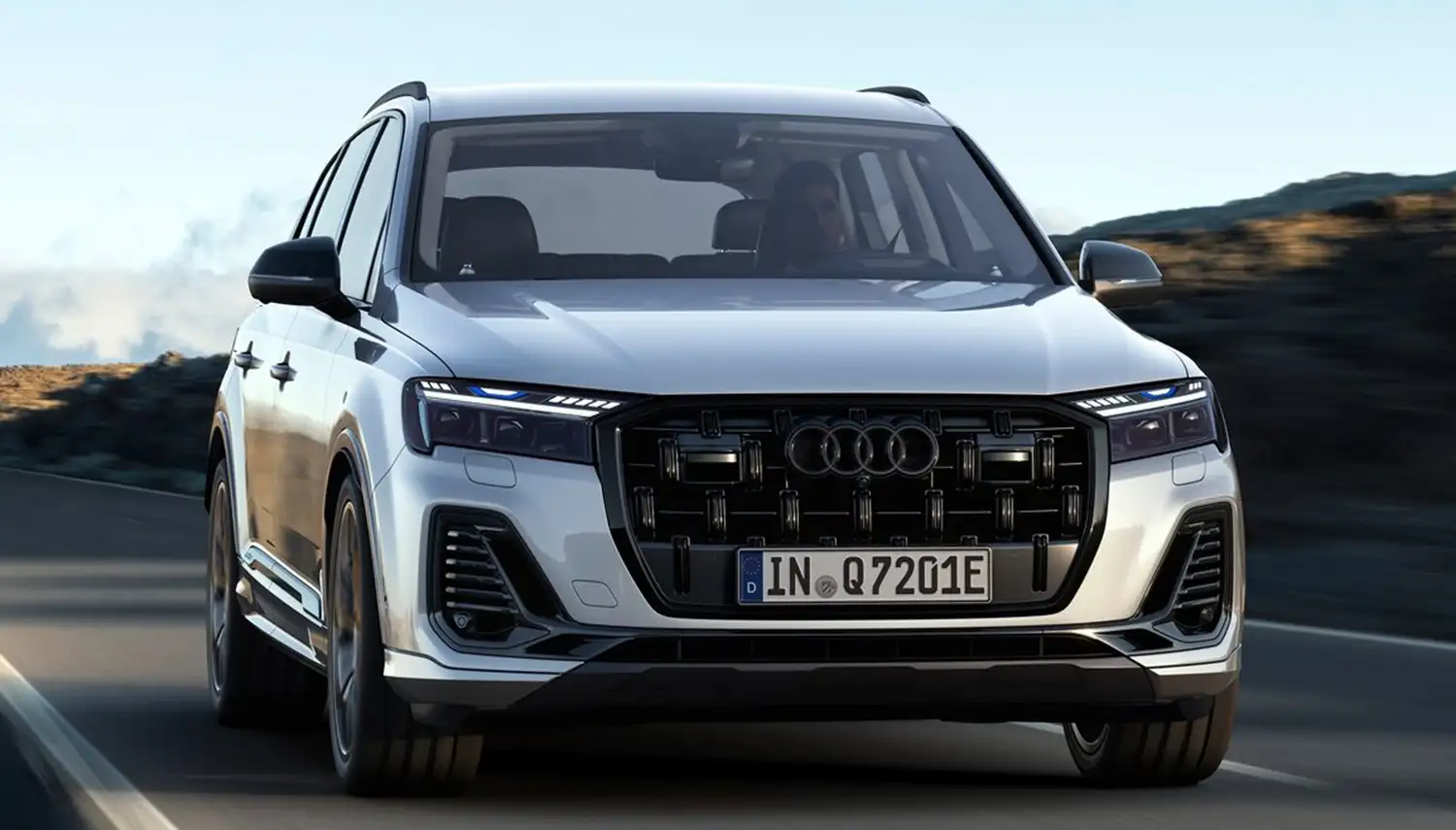
The standard equipment is also being expanded and now includes, among other features, 19” to 21” alloy wheels (depending on the model and equipment package), a rearview camera, park and high beam assist, and the convenience key. In contrast to the 55 TFSI e quattro, the 60 TFSI e quattro rolls off the line with the S line exterior and sport package as standard. Both models also come as standard with a Mode 3 charging cable.
Reliable in any situation thanks to all-wheel steering and roll stabilization
Only an Audi drives like an Audi: This is how the brand with the four rings sums up an Audi’s DNA, and it’s no less true for the brand’s plug-in hybrids. Five characteristics define the Q8’s handling: balanced, solid, controlled, precise, and effortless. The suspension, steering, and drive, as well as the braking and control systems, all play a key role in creating a reliably safe, dynamic, and simultaneously comfortable driving experience.
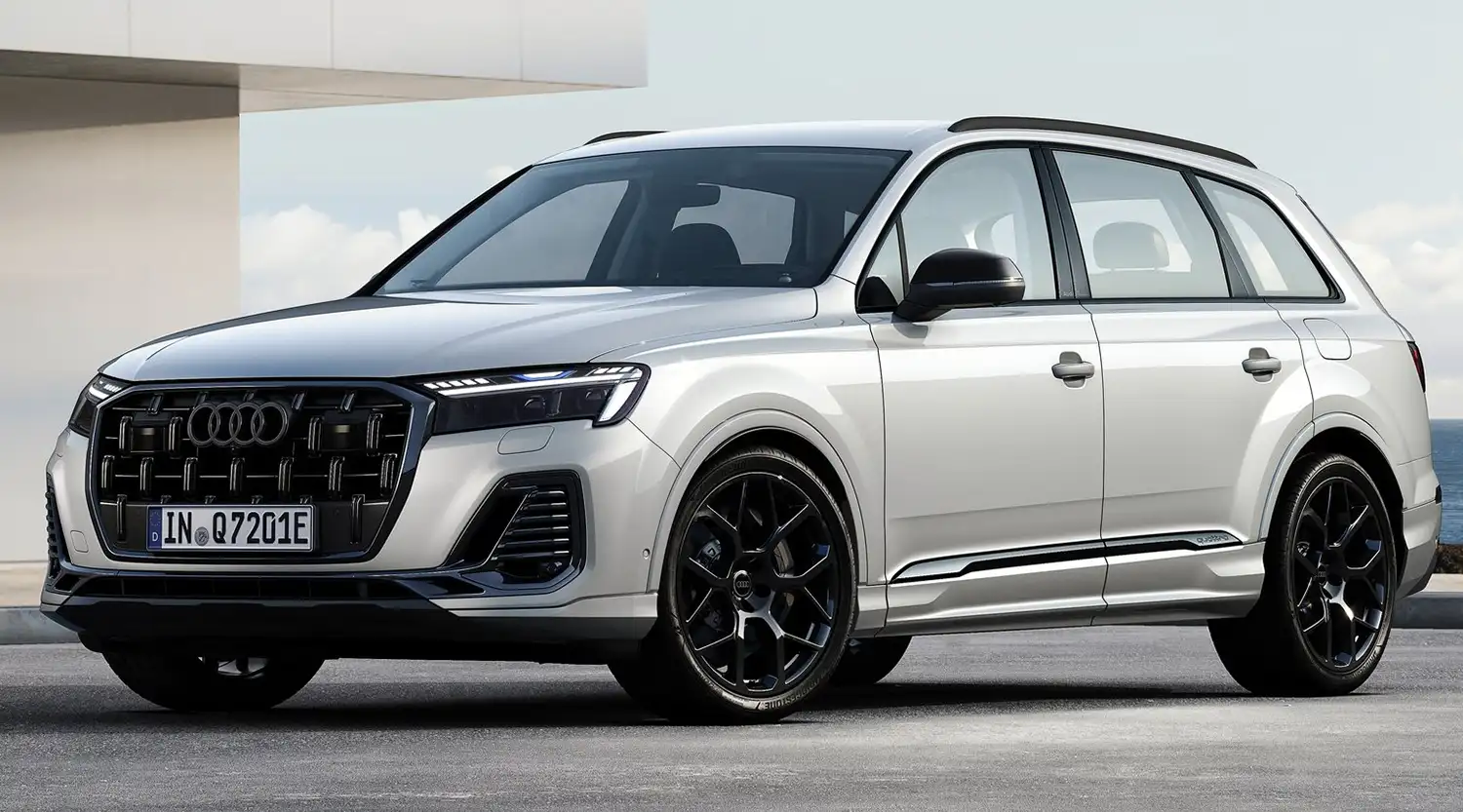
Even the standard equipment, including balanced steel spring suspension with damper control, gives both SUVs a consistent driving experience. Electronically controlled air suspension with a continuously adaptive damping system – adaptive air suspension or adaptive air suspension sport – is optionally available. Customers who purchase a Q7 60 TFSI e or Q8 60 TFSI e enjoy air suspension as part of the standard equipment. In addition, and for the first time in the plug-in hybrids, optional all-wheel steering ensures increased safety and comfort. At low speeds, the back wheels turn up to five degrees in the opposite direction to the front wheels. This reduces the turning radius by up to one meter and increases maneuverability. At the same time, the driver feels more comfort and stability at higher speeds because the back wheels turn in the same direction as the front wheels.
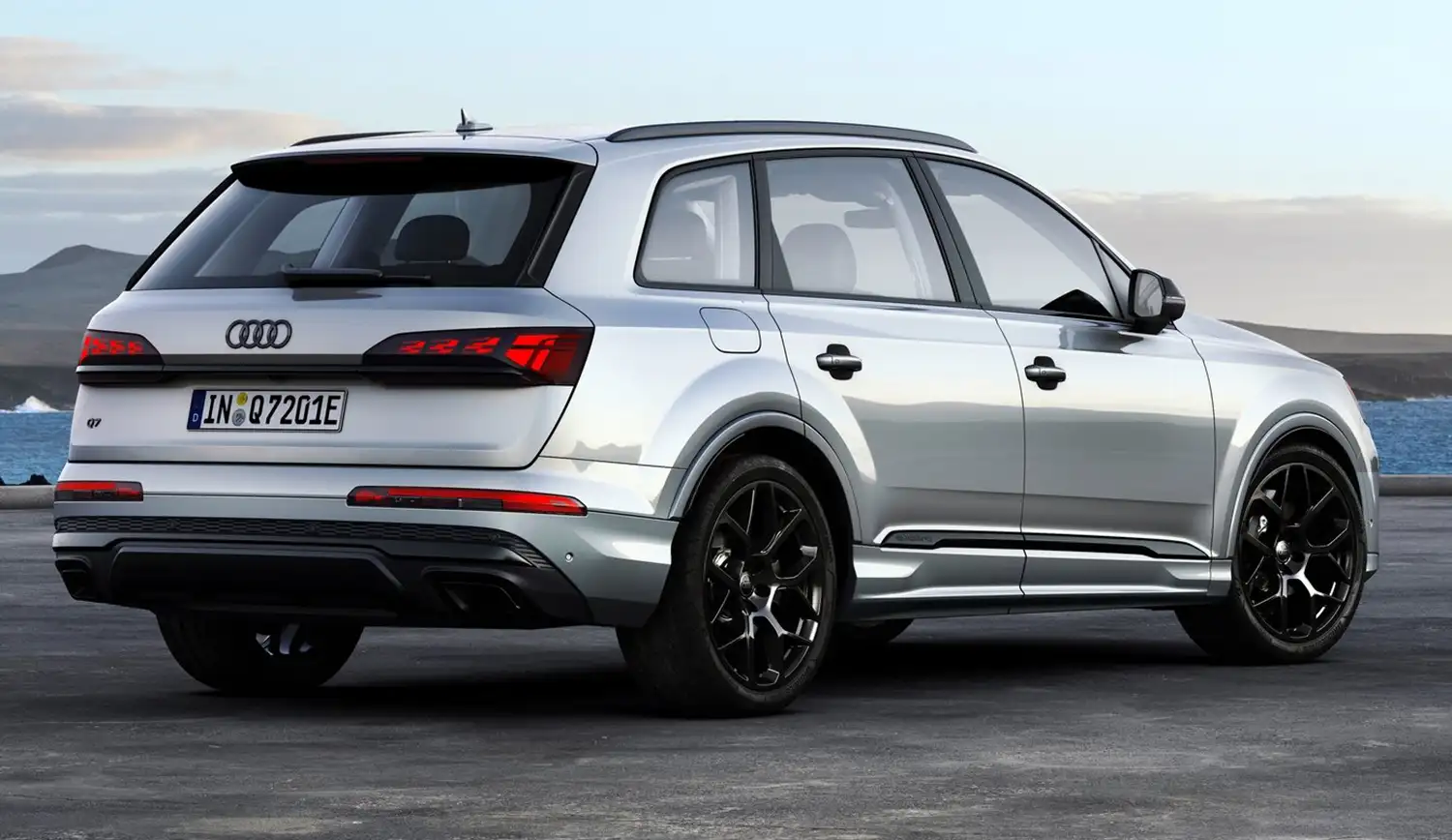
Electromechanical active roll stabilization (eAWS) ensures even more dynamics as another optional first for the plug-in hybrids. Both axles are equipped with a compact electric motor coupled to a transmission in this system. It splits the stabilizer into two halves and, when driving straight, allows them to work largely independently of each other, which reduces body movements on uneven roads. In sporty driving, however, the electric motor causes the two halves to rotate in opposite directions of each other, so they work together as a unit. This means that the car leans into the curve significantly less for a more precise steering response. The eAWS is powered by a 48-volt supercapacitor. The compact, lightweight energy storage unit, which can absorb and release high currents in a very short time, supplies the two electric motors with a maximum power of 1.5 kilowatts each.

Up to 90 km of all-electric range in urban driving; available to order from April 2024
The new Audi Q7 TFSI e quattro and Q8 TFSI e quattro with intelligent hybrid technology and revised design, innovative lighting technology, and extensive standard equipment will be launched at the end of April 2024. Prices for the Q7 55 TFSI e quattro start at 85,500 euros, while the more powerful 60 TFSI e quattro costs 96,000 euros. The new Audi Q8 55 TFSI e quattro is available to order for 92,900 euros; the Q8 60 TFSI e quattro starts at 103,200 euros.
